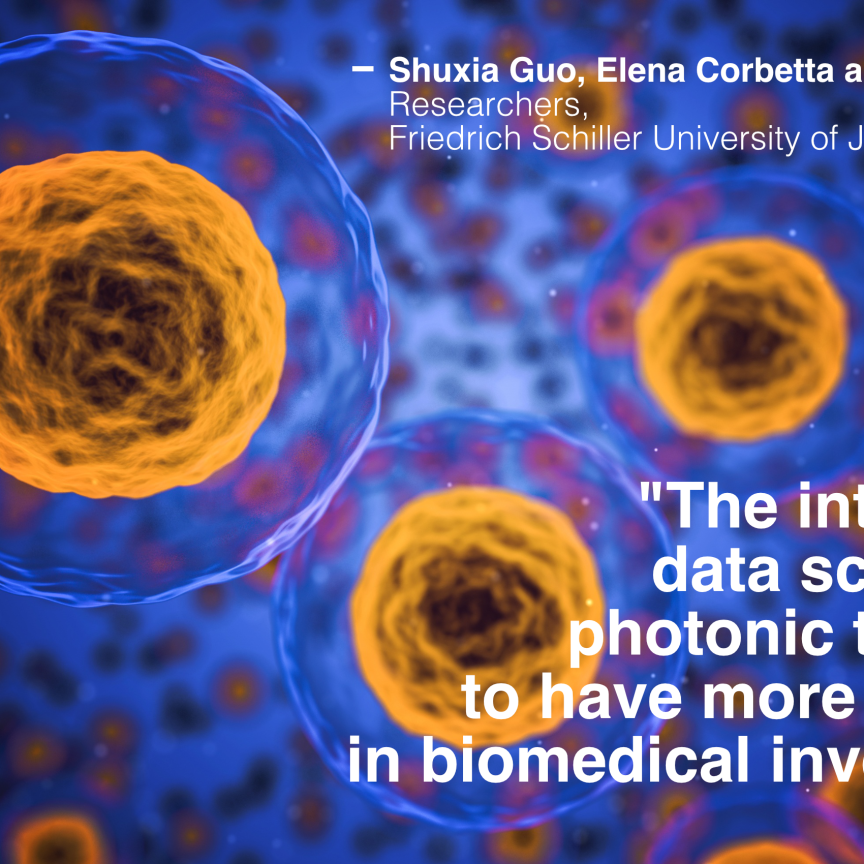Photonics has an increasing part to play in medicine, whether in the manufacture of medical devices, diagnostics or even treatment. More and more suppliers are finding increasing applications in and around the operating theatre.
Lasers from SPI Lasers are being used to weld medical devices, which are getting smaller and need to last longer. Lasers are particularly suited to the demands of medical devices, as they allow smaller welds, better yield and faster cycle times.
The most common type of laser for seam welding is the pulsed Nd:YAG laser. However, Silke Pflueger at SPI Lasers says: ‘Continuous wave/modulated lasers with good beam quality, such as fibre lasers, are useful alternatives. CW welds are suitable where requirements include high process speed, high duty cycle or keyhole welding. It also offers superior surface finish.
‘Another key process in the manufacture of medical equipment is spot welding, where reproducibility is essential. A prime example here would be laser welding of interconnects. Pulsed YAG lasers are better for ribbon welding, but fibre lasers have the advantage with round wire. Relevant materials in the medical field include nickel, nickel-clad copper, aluminium, titanium, steel and many others.
'A fairly common medical application is the welding of platinum wires to Pt/lr parts, such as the welding of lead wires to electrodes. Here, laser welding in an automated machine offers much better reproducibility.'
Pacer Components has been involved in the supply of equipment to Teeside-based medical research company Virulite, which has developed the Virulite Cold Sore Machine. The machine emits low energy non-thermal quantities of naturally occurring infrared light, to reduce healing times for cold sore sufferers.
Over a 10-year period, researchers at Virulite have analysed the effect of narrow waveband infrared light on cold sore healing times. Experimentation with many different wavelengths led to the discovery that one particular narrow waveband, centred at 1072nm wavelength, had a dramatic effect on how long a cold sore took to heal. 1072NWB light appears to act as a catalyst, enhancing local immune response and allowing the body to heal itself more rapidly.
Clinical trials were conducted at a north-east hospital, and showed that the light treatment halved cold sore healing time compared to topical aciclovir treatment, with no recorded side-effects.
Virulite approached opto specialist Pacer to help turn the idea into a commercial product. As well as advising on a 1072nm infrared source, Pacer was able to assist with production of the unit via its design and build service for OEMs looking to outsource. Pacer initially arranged manufacture of the PCB, and now supplies the entire unit to Virulite.
The light emitted by the Virulite machine is divergent light and therefore inherently ‘eye-safe’. The wavelength used is very close to that of Nd:YAG lasers, which have been used by doctors all over the world for several decades, but the unit radiates just 1/10 000 of the power levels of the medical lasers.
AMS Technologies distributes the Exalos Range of Superluminescent Light Emitting Diodes (SLEDs). SLEDs are semiconductor light sources that combine the spatial coherence of a laser diode with the temporal incoherence of an LED. Its latest 750nm line is especially suited to optical coherence tomography (OCT) and biomedical applications, thanks to their high output power and large bandwidth, and high suppression of second coherence peaks. Their spectra show a clean Gaussian shape with very low ripple values. The advantages of SLEDs result in high resolution and fast scan times.
Frankfurt Laser Company has also introduced a laser system suitable for use in medical and photodynamic therapy applications. Photodynamic therapy works by injecting a solution into the patient’s bloodstream, and then analysing, via the laser, how this is absorbed into particular organs. It is a therapy that can be used for both diagnosis and treatment.
The Frankfurt Laser product is a plug-and-play system, no special laser experience is necessary to use it, and multiple wavelengths are available. Output power ranges from 500mW to 10W for visible red and 500mW to 30W for infrared wavelengths. The system is equipped with a foot-switch to control the laser radiation. It provides different operation modes, CW, pulsed and repeat/stand-by, all of which can be controlled on the display of the user-friendly front panel.
Compact, solid state, blue (488nm) lasers are the lasers of choice for several novel biomedical techniques, because of their small footprint, high efficiency, low noise and high reliability, compared to legacy ion lasers. One of the most interesting of these applications is microendoscopy, pioneered by Optiscan (Notting Hill, Victoria, Australia), in which a miniaturised fibre-based confocal microscope enables in situ tissue biopsy during endoscopic and laparoscopic procedures.
Peter Delaney, Optiscan co-founder and director of technology, explains: ‘Traditionally, the endoscopist removes tissue samples, which are then sent to the pathology lab for examination by optical microscopy. This is not an optimum method for finding early cancers and pre-cancerous tissue, and may also require numerous samples to be unnecessarily excised. Optiscan provides miniaturised instruments that enable high-resolution optical microscopy to be performed during the procedure itself. This approach has proven to deliver an improved detection rate for diseases such as colo-rectal cancer and oesophageal adenocarcinoma.’


Endomicroscopy images taken at the time of patient endoscopic examination. Left: An endomicroscopy image of the normal colonic mucosa in a healthy patient, showing characteristic flower like arrangements of opeithelial and goblet cells. Right: An endomicroscopy image of a pre-cancerous lesion in a human patient, showing a characteristically dissarranged cellular architecture. Images courtesy of Dr Ralf Kiesslich, University Hospital, Mainz, Germany.
Optiscan’s instruments are based on the scanning laser confocal microscope (SLCM). Here, a TEM00 laser beam is focused with high NA optics to a small beam waist. Fluorescence (either incipient or from a dye marker) created at the beam waist is re-imaged onto a confocal pinhole, which acts as a Fourier aperture, providing three-dimensional spatial resolution. The laser spot or sample is rastered in the XY plane to generate an image slice at a specific Z depth, which can be changed by moving the microscope’s focusing optics.
In Optiscan’s patented system, a single-mode fibre terminates in a miniature scanning head measuring only 5mm diameter and 40mm in length. (A 3.5mm diameter version has recently been released for arthroscopic surgeries such as knee joints). The fibre acts as a confocal aperture delivering 20mW of light from a Coherent Sapphire 488nm laser to the 10-element objective lens and collecting returned fluorescence. (This particular laser was chosen because of its low noise output and power scalability). XY scanning is performed by mounting the fibre tip on two tuning fork cantilevers, which are actuated electro-magnetically. The Z axis can be stepped from a depth of 0-250µm by moving the lens with a shape-memory alloy component. Lateral (XY) image resolution is 0.7µm and the Z-axis resolution is 7 or 4µm, depending on the choice of lens. The images have a resolution of 1024 x 1024 pixels (at a rate of up to one frame per second), which translates into an object plane measuring 0.5 x 0.5mm. This field of view is large enough to offer clearly identifiable tissue architecture to the non-pathologist.
Optiscan partnered with established endoscope manufacturer Pentax to deliver turnkey, flexible solutions to this market. The system received FDA approval two years ago and is now in use at numerous clinics around the world for approximately 10 different GI tract applications. In addition, Opticsan offers a standalone ‘rigid’ system for laparascopic procedures, including investigations of endometriosis, liver cancer and pancreatic cancer, as well as for arthroscopic surgeries of the knee and other joints.
Hyperspectral imaging
Hyperspectral imaging is a spectral analysis technique that allows for the determination and presentation of spectral data within a particular scene or field of view of interest. Over the past 10 years, this technology has been widely used for two primary applications; the first being airborne military applications (surveillance, reconnaissance, spectral tagging of targets) and the second application being the remote sensing of earth (environmental analysis, geologic study, etc.). Essentially, a hyperspectral sensor collects both spatial and spectral information from a scene of interest, builds a hyperspectral datacube from these image slices, and presents a highly-resolved, rendered image to the investigator. Hyperspectral imaging provides a researcher or clinician with the following information: a visual image of the scene of interest, the chemical spectra for any point or location in that scene, and a rendered image of the scene or sample at any target wavelength(s).
With new advances in sensor technology and the recent affordability of high-performance spectral imagers, hyperspectral instruments have enabled a host of new applications – with key efforts in the area of medical imaging. Rather than flying over battlefields, these hyperspectral sensors can be deployed to scan a patient’s body in search of pre-cancerous lesions or to provide much needed spectral information through endoscopy procedures. These hyperspectral medical instruments hold great potential for non-invasive diagnosis of cancer, assessment of wound conditions, etc. For the patient, tremendous advantage is obtained by being able to not only diagnose the condition in a non-invasive manner but also to potentially treat the condition at the time of diagnosis. Great interest has been generated on the part of health care providers to investigate the promise of reducing health care costs and timeliness of treatment for many types of disease conditions through the use of hyperspectral scanning procedures.

Headwall Photonics has partnered with Galileo Group to provide the Hyperspec sensor
Galileo Group is applying this approach to biomedical and biometric imaging with its partner Headwall Photonics, which is providing a new generation mini imaging sensor called Hyperspec. Together, the two companies are implementing a consolidated business model to deploy the technology on commercial level scale into medical offices and clinics. Key application areas include skin cancer detection, wound management, and chemical agent absorption effects on human skin. Research has been completed in these areas, and continues underway with additional trials and testing. Biometric applications are also underway by correlating physiological signatures with spectral observations. Key to this success is the development of spectral libraries. With considerable investment in this technology, Galileo has developed an extensive database of human skin and tissue hyperspectral signatures, which when coupled with the targeting algorithms, form the basis for providing uniquely observable information.


